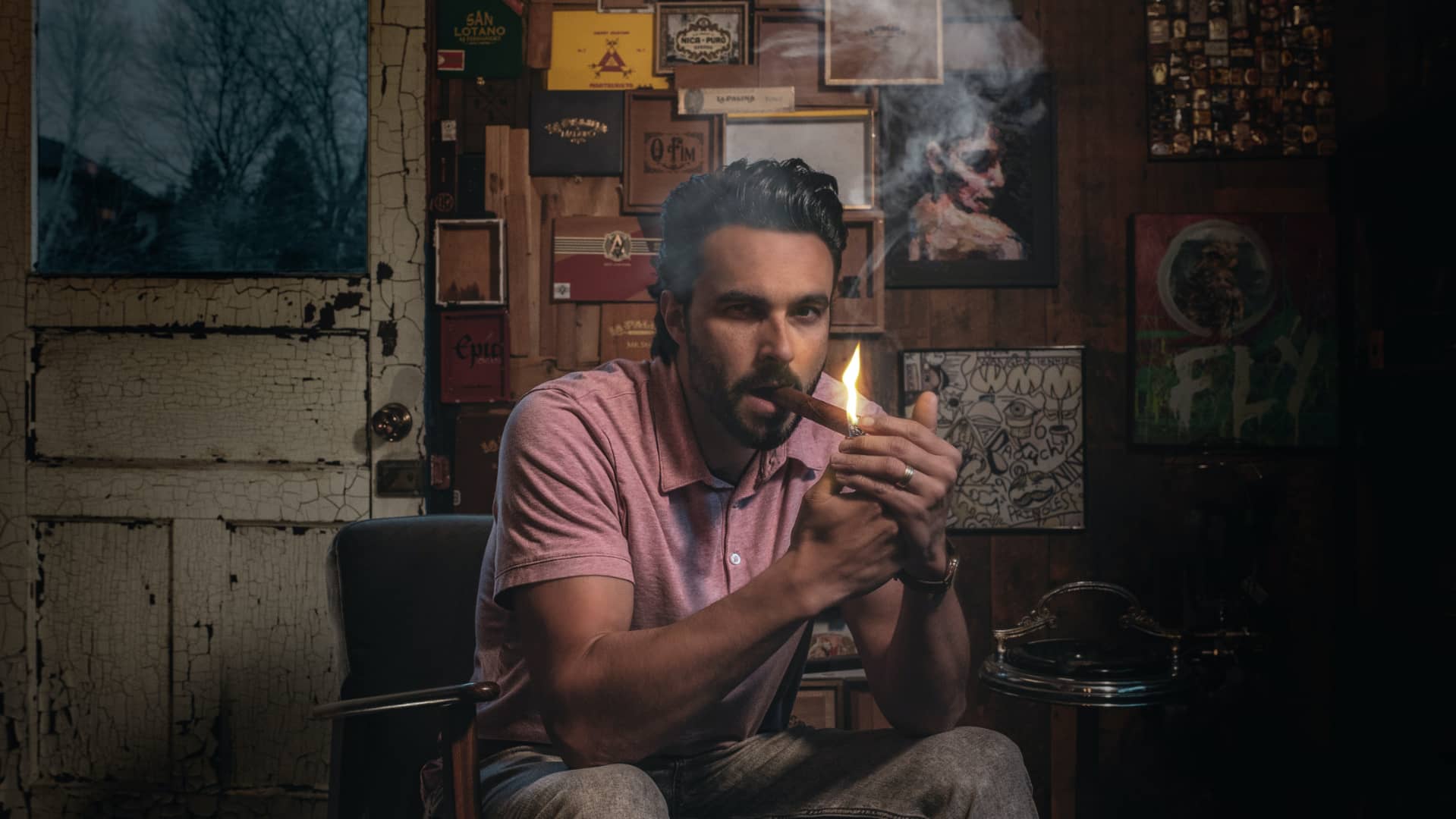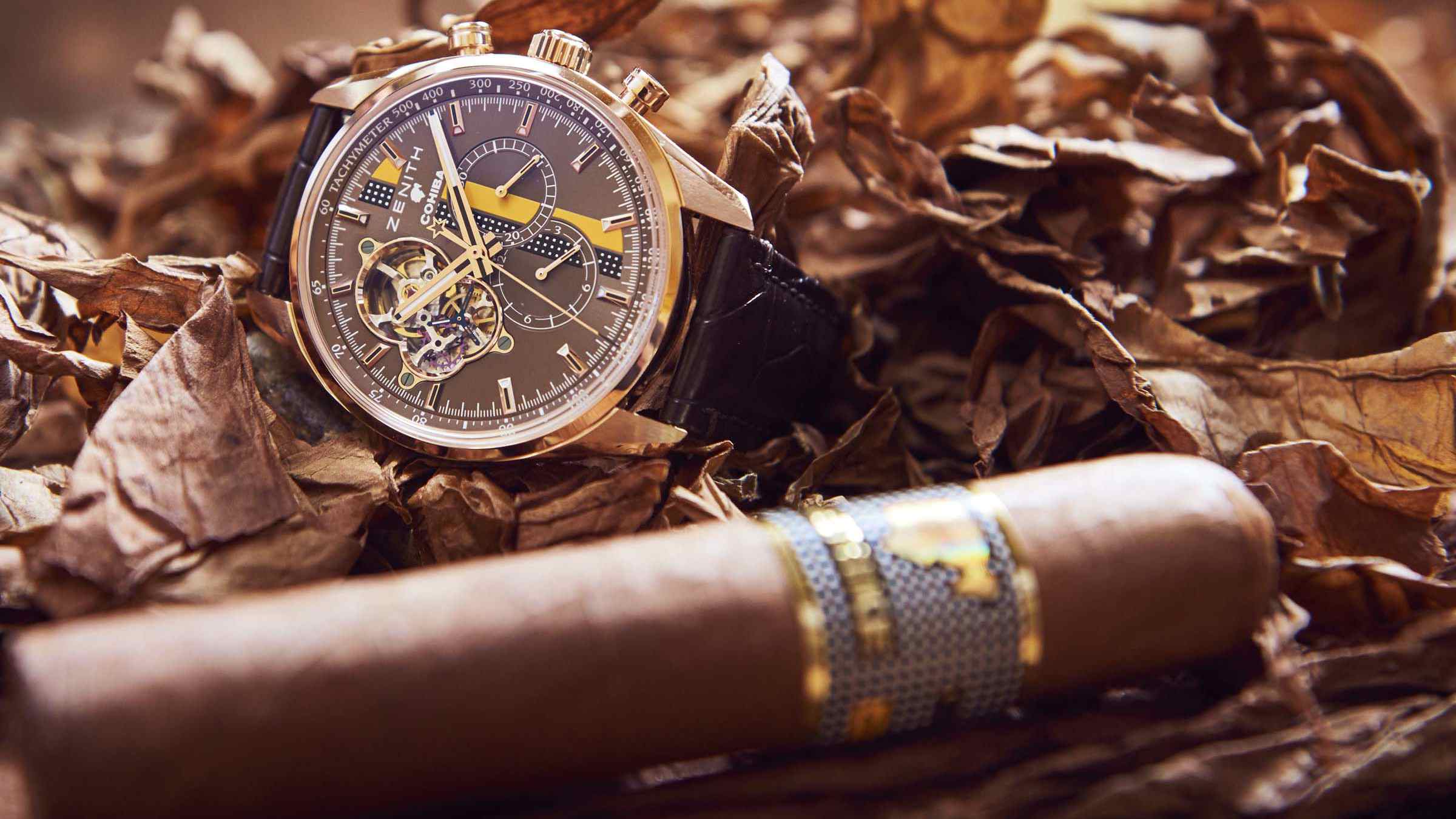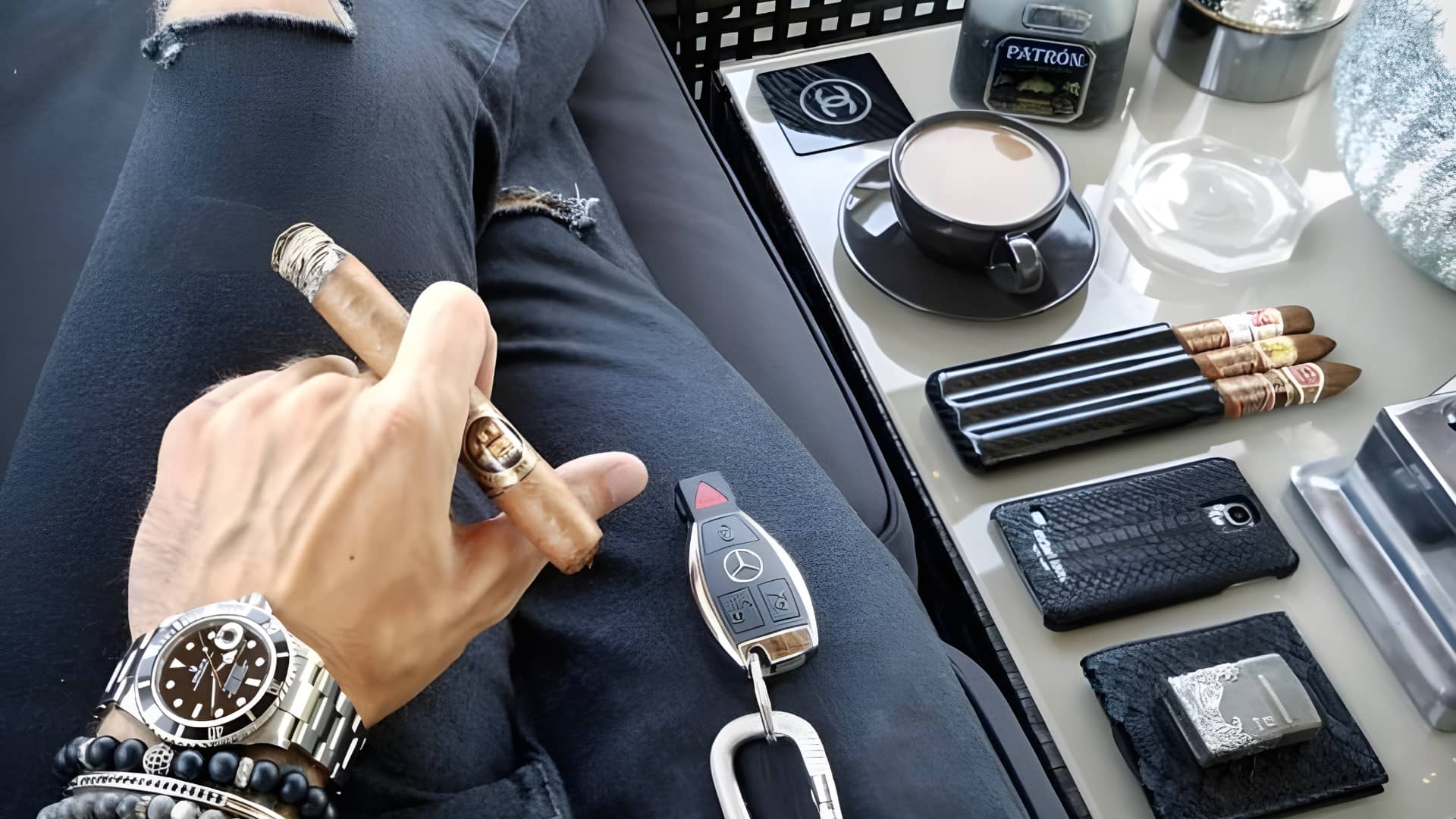The Art of Cigar smoking: a beginner’s Guide
They make a striking statement nestled in the mouths of the influential or held elegantly in the grasp of thinkers. Meticulously crafted in the Caribbean, adhering to the principles of a bygone era. However, above all, cigars, with their captivating glow and wafting smoke, offer enthusiasts a sensory journey. Similar to the acts of eating and drinking, the distinction lies in their non-essential nature for survival. A cigar serves no other purpose than to provide pleasure, relaxation, and the enhancement of leisure – indeed, an epitome of true luxury.
The narrative of Cigars’ past
Cigars boast a lengthy and diverse chronicle, stretching back to the pre-Columbian era in the Americas. The Mayas and Aztecs ascribed spiritual and medicinal virtues to cigars, employing them in ceremonies and even as a mode of currency. Upon Columbus and his crew’s encounter with the tobacco plant in the New World, it found its way to Europe, swiftly capturing public favor.
Hand-rolled from entire leaves, premium cigars predominantly hail from four key nations: Cuba, Nicaragua, the Dominican Republic, and Honduras. While Brazil, Mexico, or Costa Rica do export quality cigars, their market presence remains relatively modest.
In the World of Cigars, Cuba Holds a Timeless Legacy
When cigars are mentioned, the narrative invariably weaves into the rich tapestry of Cuba. The Spanish colonial rulers strategically invested in tobacco production in Cuba, bestowing the nation with a lasting advantage. Havana emerged as the epitome of handcrafted cigars. Post the socialist revolution, an exodus of manufacturers occurred, carrying their expertise and tobacco seeds to new, promising terrains like Nicaragua, Honduras, and the Dominican Republic. The lion’s share of the cigar industry remains firmly in the grasp of Cuban expatriates: Plasencia, E.P. Carrillo, Padron, AJ Fernandez, Oliva, Camacho, and a host of other enterprises, all founded by exiled Cubans. The U.S. economic embargo on Cuban cigars served as a pivotal catalyst. The sudden inability of the United States, the largest global cigar market, to import Cuban cigars necessitated a reliance on cigars from these burgeoning nations.
Cuba continues to wield considerable influence. The Swiss market, for instance, still witnesses Cuban cigars commanding a robust share, exceeding 60 percent. The resilience of the state-controlled Cuban cigar industry finds its roots in the unique qualities of Cuban tobacco. Cultivated in the western reaches of the island, particularly in the revered region Vuelta Abajo, Cuban tobacco boasts a distinctive full-bodied character, offering a mouth-filling, voluminous experience during smoking. Attempts by cigars from Nicaragua, Honduras, or the Dominican Republic to replicate this sensation often fall short. Nevertheless, these alternatives shine in their own right, showcasing a spectrum of flavors, ranging from mild to robust, and demonstrating excellence in craftsmanship.
Cuban tobacco exudes a unique foundational strength. For those venturing into the realm of mild cigars, superior alternatives may be found in the neighboring countries of Cuba. Within Cuba, brand names serve as our guiding lights: Iconic labels like Montecristo, Partagas, or Romeo y Julieta underwent a transformation post the socialist revolution. No longer independent entities, they are now utilized by the state-controlled cigar industry to delineate various blends and strength categories. According to the official Cuban brand classification, Hoyo de Monterrey claims the mantle of the mildest line. Entry-friendly choices include Romeo y Julieta, H. Upmann, or the Montecristo Open Series. Opting for a slightly more exclusive route, a Cohiba Robusto remains a commendable choice owing to its gentle character. What sets mild Havanas apart is their ability to deliver the full-bodied Cuban tobacco experience without overwhelming strength, making them a delightful choice even for seasoned aficionados.
Beyond the Cuban borders, where independent enterprises craft their cigars, the flavor panorama expands exponentially. Ranging from robust and spicy-sharp (a seemingly intimidating prospect that captivates many seasoned enthusiasts) to profoundly mild and sweet, connoisseurs are presented with a myriad of choices. Expertise in navigating this lush landscape is provided by knowledgeable aficionados or reputable cigar purveyors. Additionally, valuable insights into expected strength are gleaned from the meticulously processed tobacco. For instance, a Connecticut wrapper typically signals a mild blend. The age of the tobacco is another factor influencing strength, with prolonged aging leading to a gradual reduction in nicotine levels. A stellar illustration of this dynamic is found in the Quesada Reserva Privada line, showcasing tobaccos harvested in 1997.
Choosing the Right Cigar
Choosing the ideal cigar involves weighing numerous factors, such as size, shape, flavor, and strength. The cigar’s size, measured in inches, is denoted as “length,” while its diameter is termed “ring gauge.” The cigar’s shape, known as “vitola,” spans a spectrum from slender and elongated to brief and compact.
When delving into flavor considerations, cigars emerge from a diverse array of tobacco leaves sourced from different countries, each contributing a unique and characteristic taste. Common flavor profiles encompass earthy, spicy, and sweet notes. Equally vital is the cigar’s strength, a determining factor in the delivery of nicotine. Cigars are conventionally classified as mild, medium, or full-bodied.
Cigar aficionados savor the essence without inhaling, focusing on taste and aromas absorbed through mouth and nasal receptors. While not drawing smoke into the lungs, the cigar enthusiast absorbs nicotine via oral mucous membranes. Acting as a natural insecticide for the tobacco plant, nicotine, a nerve toxin, has a stimulating effect in small quantities but induces discomfort and nausea in larger doses. Much like coffee tolerance, repeated exposure builds resistance, emphasizing the importance for beginners to start with a milder cigar, allowing them to acclimate to nicotine effects. External factors also play a role, as nicotine has a more pronounced impact on an empty stomach during morning coffee than after a hearty dinner.
Cigars, crafted in diverse sizes and shapes, prompt beginners to lean towards larger formats. Despite the inclination for small, slim cigars, which can pack intense flavors, a more suitable choice for beginners might be the Robusto format, providing about an hour of smoking pleasure. Using a cutter or drill, the cap at the head end is skillfully opened—this cap, resembling a protective shield, binds the cigar, comprised solely of tobacco, with a touch of natural adhesive.
Cutting and Lighting a Cigar
To ignite your cigar, equip yourself with a jet flame lighter, soft flame, or matches. Hold the cigar at a 45-degree angle above the flame, gently rotating it until the end catches fire uniformly. Exercise caution against drawing too forcefully or frequently, as this might elevate the cigar’s temperature, jeopardizing its flavor. Certainly, steer clear of gasoline lighters or candles—these emissions could promptly spoil your cigar experience!
Cigar Etiquette
Several guidelines should be observed in the realm of cigar etiquette. It is crucial, first and foremost, to show respect for others and refrain from smoking near individuals uncomfortable with it. It is deemed impolite to blow smoke directly into someone’s face or make a cigar a topic of conversation. Additionally, when in a cigar lounge, it’s considered discourteous to engage in loud conversations, potentially disrupting the experience for fellow patrons. When indulging in a cigar, take your time and savor the moment. It’s not uncommon for a cigar to last an hour or even longer, so there’s no need to hurry.
Mistakes to Avoid in Cigar Smoking
Biting off the cigar head
During the cutting process, various mishaps can occur, such as cutting too deeply or at an angle. While these are things that can go awry, they aren’t particularly serious. However, if the cigar head is bitten off and then spat into the ashtray, it might be worth considering how dedicated one is to this lifestyle. It’s evident that, instead, a cutter, cigar scissors, or a cigar drill should be employed. Despite its frequent depiction in various films, biting off the cigar head has more drawbacks than benefits. In this action, the cigar is usually not just damaged but almost entirely destroyed, making it unenjoyable.
Igniting the Cigar with a Petrol Lighter
Smokers who have encountered the sharp taste while igniting their smokes with a gasoline lighter understand why this practice should be strictly avoided, especially when enjoying cigars. The dominant gasoline flavor can overshadow or entirely ruin the delicate aroma of a quality cigar. A situation worse than this would be using a cigar to light a New Year’s Eve firecracker. Common sense dictates that, instead, a cigar lighter or an alternative ignition source with neutral-tasting and odorless gas, or specific cigar matches, should be the preferred choice.
Avoiding Rush While Smoking
Always remember: the essence of smoking cigars lies in savoring the experience. Anyone attempting to rush through the enjoyment will quickly realize that it contradicts the very idea of pleasure. Consequently, strolling through the shopping streets with a fine cigar in hand and hastily taking puffs is not advisable. It comes off as eager, and, most importantly, it diminishes the joy and the olfactory encounter. Moreover, the cigar tends to burn excessively hot, resulting in a sharper and, hence, spoiled aroma. The key here is to embrace relaxation. Kick back, hold your favorite drink in the other hand, and draw on the cigar at a leisurely pace, once or twice per minute at most.
Avoid Inhaling Cigar Smoke
Cigars are distinct from cigarettes, offering the full potency of tobacco. Inhaling cigar smoke instead of holding it in the mouth will swiftly teach one otherwise. It’s crucial to note that this isn’t about fulfilling a nicotine craving but rather savoring the delightful flavors of cigars. There’s no necessity for the smoke to reach the lungs; cigars are meant to be savored through puffing! Keeping the smoke in the mouth throughout allows for the optimal perception of subtle aromas, letting the smoke literally dissolve on the tongue. For seasoned smokers looking to elevate their experience, exhaling smoke through the nose intensifies the olfactory sensations and enhances the overall taste. However, it’s essential to exercise caution and start with mild cigars.
Extinguishing the Cigar in the Ashtray
Anyone who has forcibly extinguished a cigar in an ashtray has likely experienced the unpleasant smell, highlighting why this practice should be avoided. Moreover, this goes against cigar etiquette as aficionados hold great respect for the craftsmanship involved in cigar manufacturing. When concluding the smoking experience—and it doesn’t necessarily have to be when the cigar is nearly finished—it’s recommended to wrap it up in a manner similar to how it commenced: with leisure and patience. Appreciating the lingering aromas of the smoked cigar, gently placing the stub in the ashtray until it naturally extinguishes is a considerate practice. This way, by depriving the cigar of oxygen, it swiftly goes out, effectively creating an impromptu incense stick for the aficionado.
Bragging Around
Individuals who make a spectacle out of lighting up and boast about their expensive cigars are generally unwelcome. This conduct is disapproved not only by staunch non-smokers but also within cigar enthusiasts’ circles. The selection and consumption of a cigar, irrespective of its cost, should be driven by personal interest and enjoyment, rather than an attempt to impress others. Nevertheless, engaging in cigar-related discussions among like-minded individuals is perfectly acceptable, provided it is done with the requisite social sensitivity.
Always Smoking the Same Thing
Choosing Romeo y Julieta No. 2 every time—does that mean it’s always Romeo y Julieta No. 2? For pleasure-seeking smokers who prefer not to venture into new cigar territory—which is perfectly acceptable if they’ve found their go-to smoke—they might be missing out on significant enjoyment. There’s a wide array of fascinating cigars waiting to be explored. Moreover, embracing new cigars aids in the evolution of personal taste buds and broadens one’s flavor horizons. Having a limited cigar selection makes it challenging to engage in meaningful exchanges with fellow enthusiasts, restricting the potential for enriching conversations. Our suggestion is to embrace the excitement of trying out new cigars regularly and, most importantly, share those experiences with like-minded individuals to uncover fresh and delightful flavor combinations! There’s absolutely nothing wrong with having a preferred brand or country of origin. In fact, being aware of your own taste preferences makes it even easier to discover similar and other exceptional cigars. This paves the way for an enjoyable journey of discovery.
Embark on the journey of discovery. A realm of flavors and narratives awaits. Your personal taste acts as the guiding compass.





